Belka, Strelka and the furry team: the story of the conquest of space by animals
On August 19, 1960, the legendary mongrels Belka and Strelka went into orbit on board a spacecraft and, after making a daily flight, returned safely to Earth. Few people know, but they were not alone in space, they were accompanied by a rabbit, 40 mice, a couple of rats and several flies and plants.
On the anniversary of the memorable flight, we will tell you about other animals that took part in the space race and left the surface of the Earth, and in some cases sacrificed their lives.
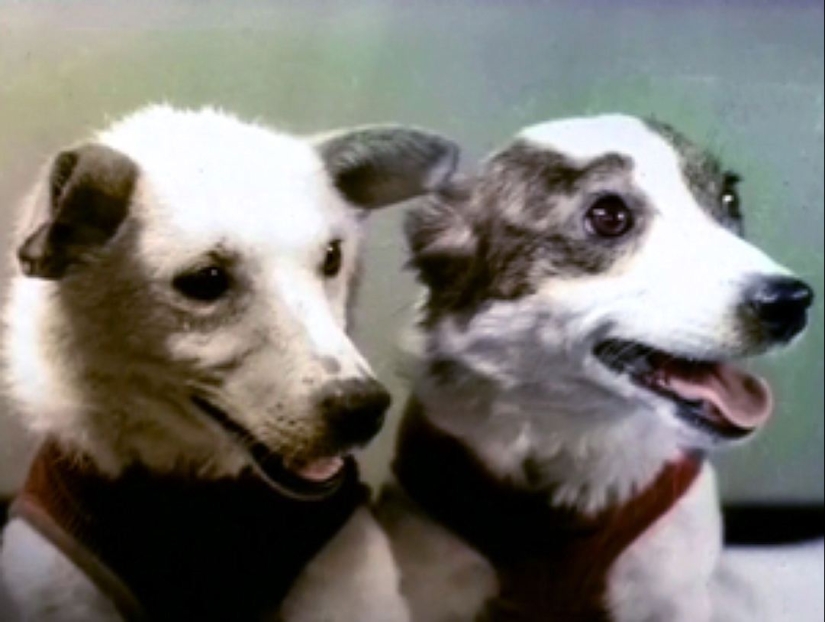
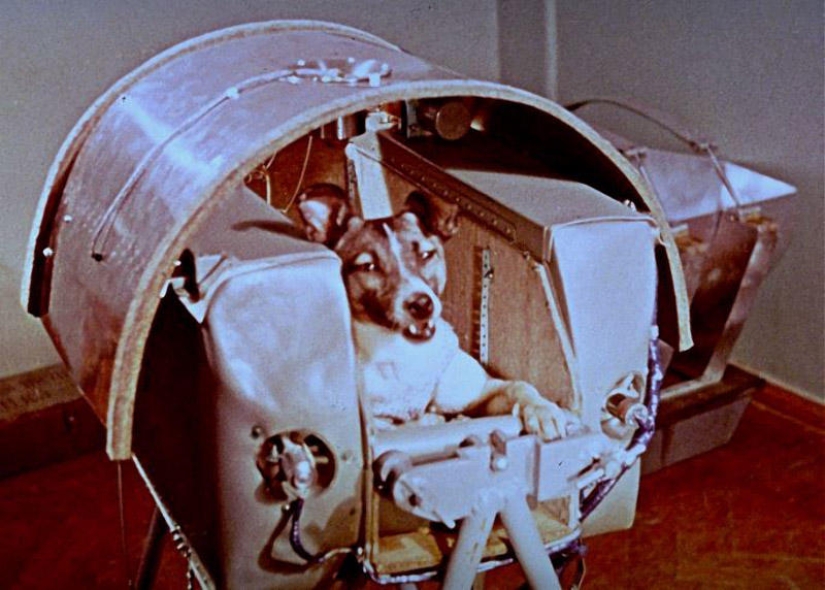
On November 3, 1957, Sputnik‑2 entered Earth orbit. Together with him, the first warm — blooded animal appeared outside the boundaries of the earth's atmosphere-the dog Laika, which began the era of space travel with a crew on board. The purpose of this launch was "to determine the very possibility of living creatures staying at altitudes up to 100-110 km after throwing them there with the help of rockets, subsequent ejection and parachute descent."
Despite the fact that many animals who have been in space have returned home, not everyone has succeeded. Laika was sacrificed for the last frontier. Hastily placed on board the Soviet Sputnik-2, it was the first animal in orbit. But the Soviet space program did not plan to return the satellite, and Laika died after a few hours in space.
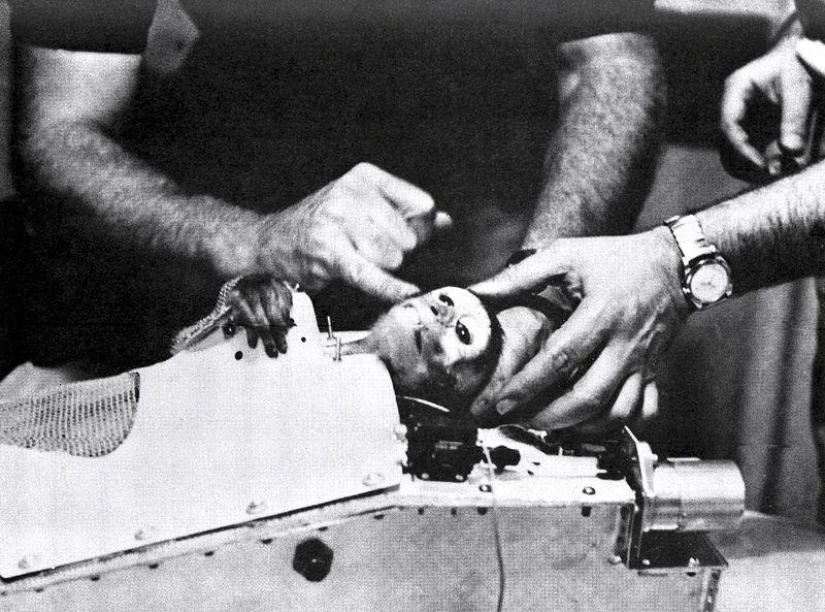
On May 28, 1959, the macaque Able (pictured above) and the squirrel monkey Baker were launched 480 kilometers above the Earth's surface on board the American Jupiter rocket. They returned safely to Earth from their" cabin " in the forward compartment, but Abel died due to the introduction of anesthesia a few days later, when doctors tried to remove the electrode.
She followed in the footsteps of Albert the macaque, who in 1949 became the first animal in space to travel 135 kilometers aboard the V‑2, but died when it collided with the Earth.

Abel's companion, Baker, is photographed in the BIOPACK bag in which she lived during the flight. After returning to Earth, she lived to the advanced age of 27 and died in 1984.
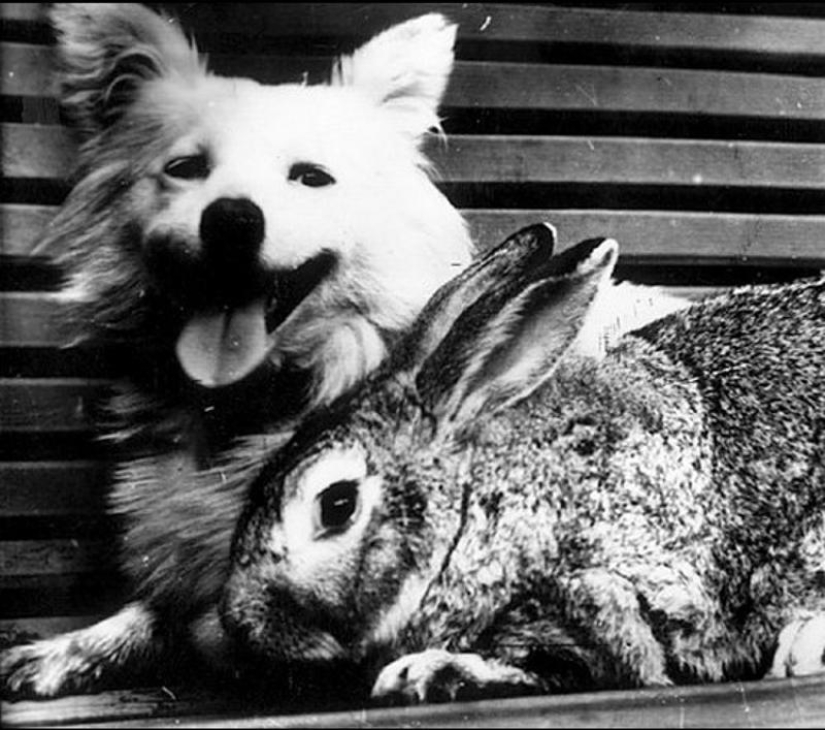
In July 1959, two dogs, Brave (left) and Snowflake (not in the photo), went into space together with the rabbit Marfusha, who was also called Little Marfa (right). Brave became an experienced pilot, having made a total of five flights.
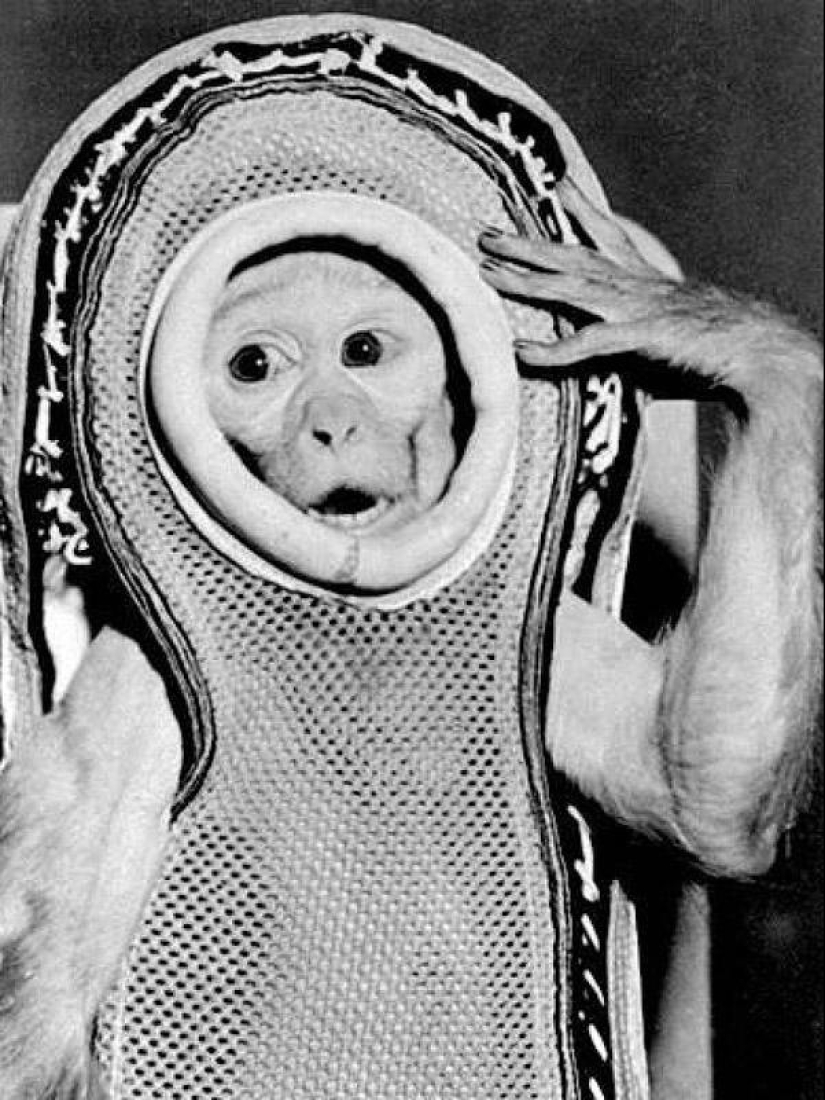
Miss Sam's macaque-the assistant to another monkey, Sam-was one of the leading test monkeys at NASA. She helped to check the exit mechanism for astronauts if they encountered problems during the launch. On January 21, 1960, she was sent in the Mercury capsule. Miss Sam reached a speed of 2900 kilometers per hour and climbed to an altitude of 15 kilometers by the time she was returned to the Atlantic Ocean. In the photo, she is in her spacesuit.
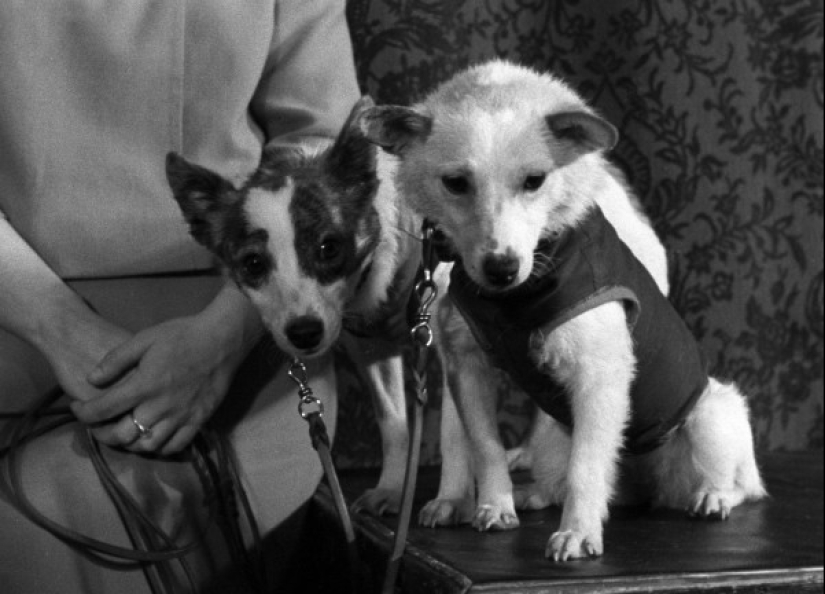
A couple of Soviet dogs that left a mark in history. On August 19, 1960, after a year of training, they became the first animals to safely return from space orbit. Before sending Belka and Strelka into space, scientists had to solve several serious problems. In the cabin of the spacecraft, it was not possible to achieve an acceptable temperature for a long time – the dogs could hardly stand the heat. In this photo, they are at a press conference three days after their historic flight.
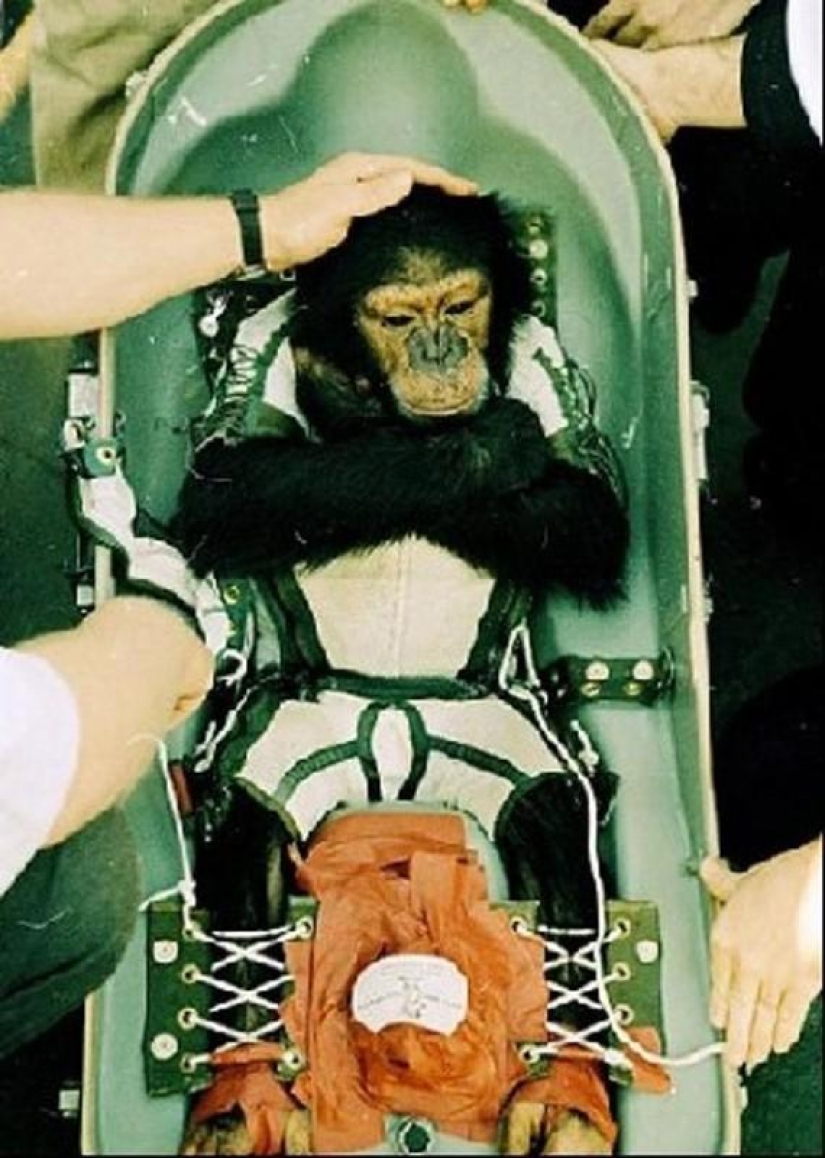
11 days after John F. Kennedy became the first Catholic in the White House, NASA made Ham the first chimpanzee in space. Unlike Kennedy, Ham was not a Native American, he came from West Africa. Despite the fact that the flight was made 68 kilometers higher and 2400 kilometers per hour faster than expected, Ham endured it well, experiencing only slight dehydration and fatigue. In this photo, he is resting on board a rescue ship after being pulled out of the Atlantic Ocean.
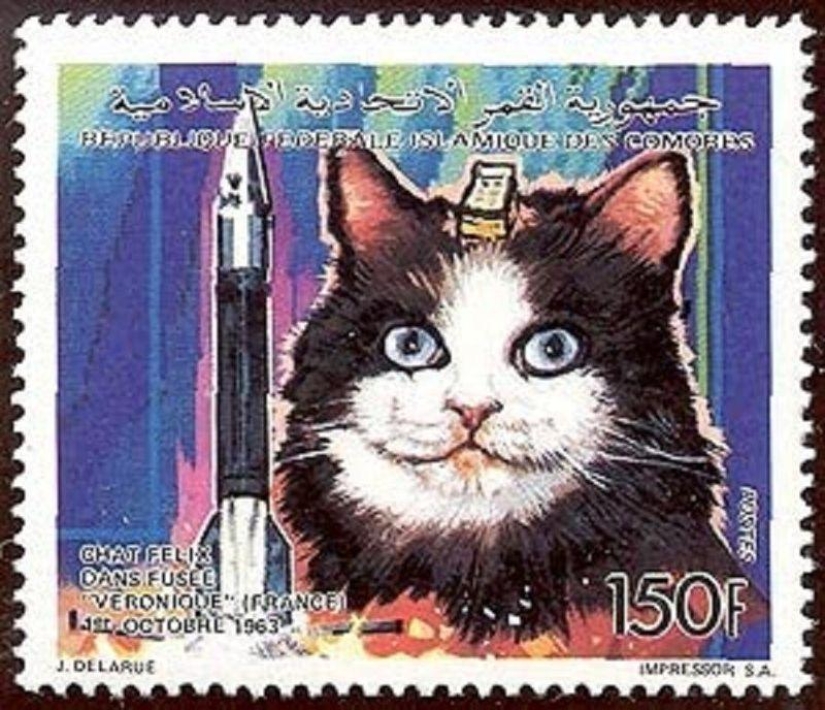
In October 1963, France sent the first cat into space aboard the Veronique rocket. Although Felix did not become as famous as his namesake from the cartoon, he was depicted on a 1992 stamp issued by the Government of the Comoros.
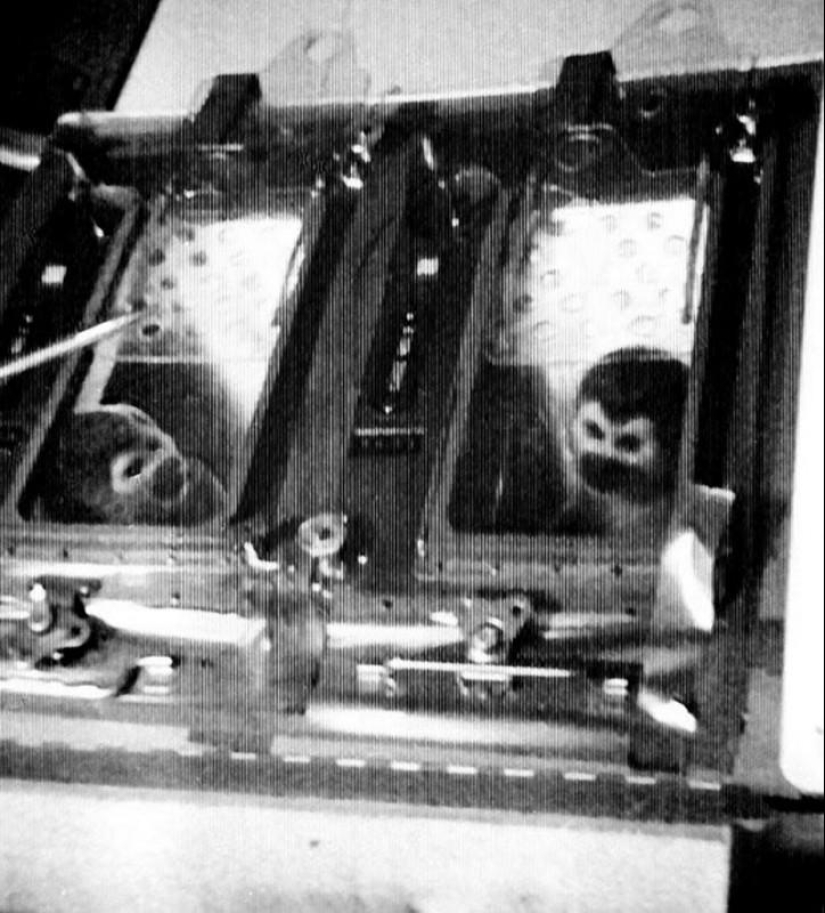
With the advent of space shuttles, NASA decided to test the long-term effects of being in space on monkeys. In 1985, the agency sent two squirrel monkeys — they had no names — and two dozen white rats aboard the Challenger. Here, two of them are looking through the glass, floating in the air. Both monkeys returned safely to Earth.
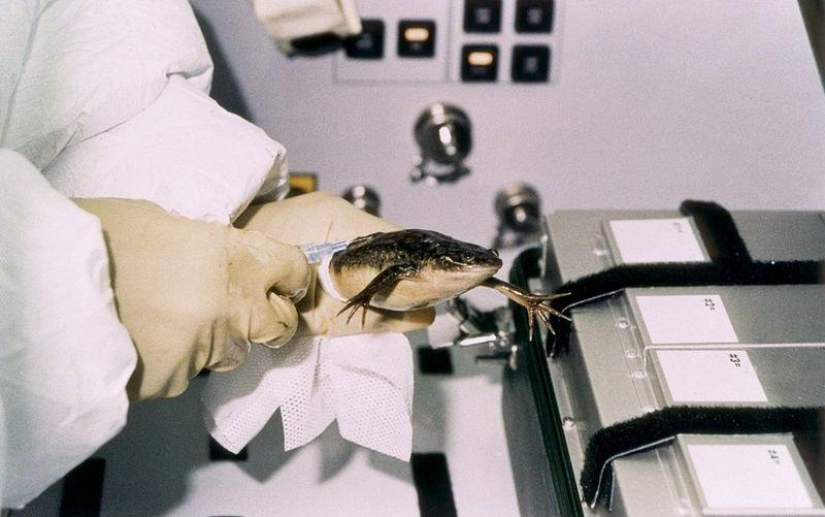
An astronaut holds a frog aboard the space shuttle Endeavour in 1992. NASA has sent frogs into space to investigate how weightlessness affects amphibian eggs fertilized and hatched in space.
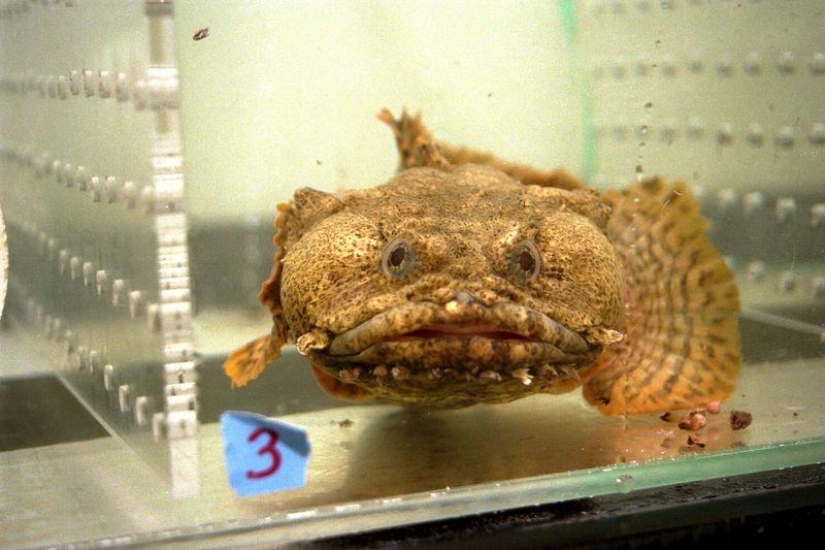
No, it's not a Stranger: This is a frog, an Earth creature sent into space aboard the Columbia in 1997 to study the effects of reduced gravity on the nervous system. Scientists chose the frog because its ear is similar in structure to a human one.
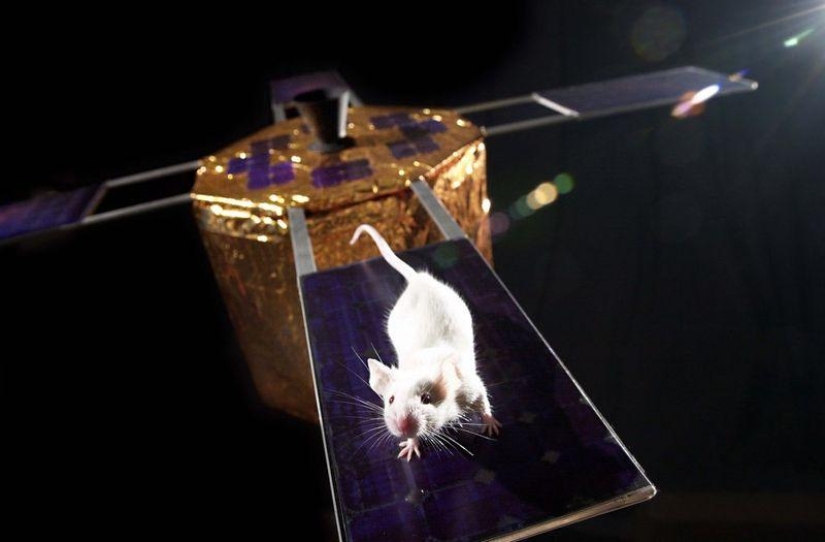
What's next for animal space explorers? They could help answer questions about the further path of man deep into the Solar system. A group of scientists hopes to send mice into low-Earth orbit aboard a satellite designed to simulate the gravity of Mars — the satellite is located between the weightlessness of space and the Earth's gravity — to see how they will react.
Keywords: NASA | Animals | Space | Dogs | Launch | USSR | Monkeys
Post News ArticleRecent articles

Is there such a thing as porn addiction? If there is — then does it prevent you from living and is it worth getting rid of ...

Milk is an integral product of baby food. No one doubts the benefits of this drink for a growing body. Of course, if it is of high ...
Related articles

Even if you love animals, you've probably only met a small fraction of them. 1 367 555 discovered animal species on ...

A startlingly beautiful earth snail crawled up the back of a crested crocodile and looked right into its toothy mouth. The unusual ...

Our favorite four-legged friends can be very charming and cute. However, each of them at some point played demons and they begin to ...

Showers, or at least a place where you can quickly and easily take a shower, are found in every modern home. But in some houses ...